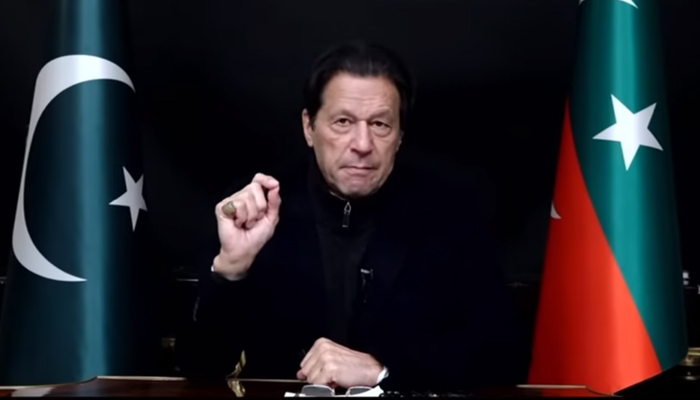"Imran Khan and the Changing Dynamics of Pakistan Politics"
cThe Rise of Imran Khan in Politics
Imran Khan first gained fame as a cricket legend, leading Pakistan to its only Cricket World Cup victory in 1992. His charisma and reputation for integrity made his transition into politics in 1996 with the establishment of PTI notable. Initially dismissed as a political outsider with little chance of success, Khan's ascent was gradual but marked by persistence.
Early Struggles
PTI faced an uphill battle during its formative years. Pakistan’s political landscape was dominated by two dynastic parties: the Pakistan Muslim League-Nawaz (PML-N) and the Pakistan People’s Party (PPP). These powerful entities controlled the narrative, marginalizing new entrants like PTI. For over a decade, Khan’s party remained on the fringes of politics with limited electoral success.
A Turning Point
The 2013 general elections proved pivotal for PTI. While the party did not win a majority, it emerged as a significant political force, becoming the second-largest party by popular vote. Khan's vision of reform resonated with the youth and urban middle class, who were frustrated with corruption, economic stagnation, and poor governance.
Imran Khan’s Premiership (2018–2022): A Mixed Legacy
In the 2018 general elections, PTI swept into power with promises of a "Naya Pakistan" (New Pakistan). Khan campaigned on a platform of anti-corruption, economic revival, and creating a welfare state modeled on the principles of the Prophet Muhammad’s Medina.
Achievements
Social Welfare Initiatives
- The Ehsaas Program, aimed at poverty alleviation, provided financial assistance to vulnerable groups.
- The Sehat Sahulat Program introduced free healthcare access for millions of Pakistanis.
Diplomatic Successes
- Khan's focus on regional peace, particularly his role in facilitating dialogue between the United States and the Taliban, garnered international recognition.
- His vocal stance on global issues like Islamophobia resonated with many Muslim-majority countries.
Environmental Policies
- Initiatives like the Billion Tree Tsunami and reforestation projects earned global acclaim and positioned Pakistan as a leader in environmental sustainability.
Challenges and Criticism
Economic Instability
- Despite promises of economic reform, Khan’s tenure saw soaring inflation, financial instability, and growing fiscal deficits. Critics pointed to his reliance on IMF loans and inconsistent policies as aggravating factors.
Political Polarization
- Khan’s confrontational political style deepened divisions in Pakistan. His administration's strained relationships with opposition parties and the military created an environment of perpetual conflict.
Governance Issues
- Allegations of mismanagement, particularly during the COVID-19 pandemic, undermined his government’s credibility.
The Fall of Imran Khan and Its Aftermath
In April 2022, Khan became the first Prime Minister in Pakistan’s history to be removed through a no-confidence vote. His removal followed growing tensions with the powerful military, which had been instrumental in his rise to power. Khan claimed his ouster was the result of a foreign conspiracy, fueling his narrative of victimization.
A Surge in Popularity
Despite being removed from office, Khan’s popularity surged in the aftermath. He leveraged public dissatisfaction with the coalition government, which struggled to address economic challenges. PTI’s massive rallies across the country showcased Khan’s enduring appeal, especially among the youth.
Legal and Political Challenges
Khan faced numerous legal battles, ranging from corruption allegations to charges of incitement. These challenges, however, did little to dent his popularity, as his supporters often viewed them as politically motivated attacks.
Changing Dynamics in Pakistan’s Politics
Imran Khan’s political journey reflects broader shifts in Pakistan’s political landscape. His leadership has exposed and amplified underlying tensions within governance structures, society, and the economy.
Rise of Populism
Khan’s style of politics represents a break from traditional elitist practices. By leveraging social media and grassroots activism, he connected directly with ordinary Pakistanis, bypassing traditional power brokers. This populist approach has redefined political engagement in Pakistan, making it more participatory and youth-driven.
Declining Influence of Dynastic Politics
Khan’s rise disrupted the dominance of dynastic parties like PML-N and PPP. While these parties remain influential, PTI’s emergence has introduced a viable alternative, challenging their political monopoly.
Civil-Military Relations
Khan’s tenure highlighted the complexities of civil-military relations in Pakistan. Initially seen as a military-backed leader, his fallout with the establishment underscored the challenges of civilian supremacy in a country with a history of military interventions.
Media and Narrative Control
Under Khan, the role of media and information became central to politics. His government faced criticism for restricting press freedom, but his mastery of social media platforms allowed him to dominate the political narrative.
Challenges and Opportunities Ahead
For Imran Khan
Rebuilding Credibility
- To return to power, Khan must address concerns about his economic management and governance capabilities.
Resolving Legal Issues
- Overcoming ongoing legal battles will be crucial for maintaining his political viability.
Expanding Political Alliances
- Building broader coalitions could strengthen PTI’s prospects in upcoming elections.
For Pakistan
Political Stability
- The deep polarization encouraged by Khan’s confrontational politics underscores the need for a more collaborative approach to governance.
Economic Recovery
- Addressing structural economic challenges is vital for sustainable development, irrespective of leadership.
Strengthening Institutions
- The country’s future depends on the resilience of democratic institutions that uphold the rule of law free from political interference.
Conclusion
Imran Khan’s impact on Pakistan’s politics is transformative and contentious. His rise challenged entrenched power structures, introducing a new era of populism and political engagement. However, his tenure as Prime Minister exposed significant challenges, including economic instability and governance shortcomings.
As Pakistan navigates its political and economic future, Khan’s legacy will continue to shape its trajectory. Whether he returns to power or remains an influential opposition leader, his role in redefining Pakistan’s political landscape is undeniable. His journey underscores the complexities and opportunities within a rapidly evolving political system, offering lessons for both leaders and citizens alike.


